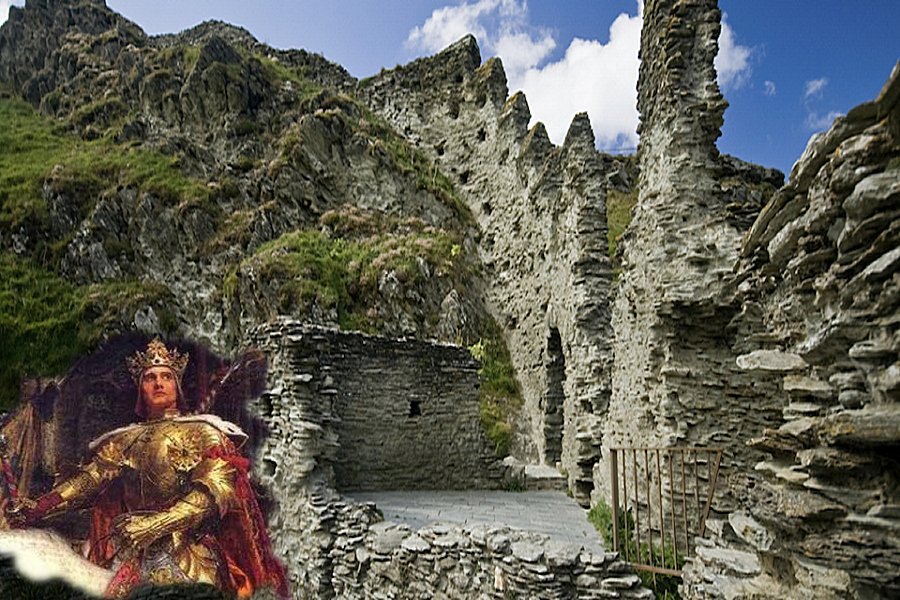Was Tintagel Castle A Fortress Used By Iconic Hero King Arthur?
A. Sutherland - AncientPages.com - Ancient Tintagel Castle has quite spectacular natural topography, particularly the eroded neck of land dividing the island from the mainland.
Located on both sides of the chasm, the Castle experienced centuries-long erosion.
It practically 'consumed' many parts of it along with earlier buildings. Split in two by the force of the sea and ruined, the Tintagel Castle was once the fortress used by King Arthur.
Iconic hero King Arthur was first linked to Tintagel in the 12th century when Geoffrey of Monmouth named it the place where Arthur was conceived.
One legend is that the infant Arthur, probably of mixed Roman and British parentage, was thrown by the waves on the beach by Merlin's cave. He is identified with the known history of a Celtic chieftain of the 5th century, a great warrior who led his fellow citizens in the West in their resistance against Saxon invaders.
The marriage of Arthur and Guinevere. Image credit: Speed Lancelot (1860-1931) - Scan of illustration at title page in a book of The Legends of King Arthur and His Knights (Facing p. 78), 1912., 9th edition. Ed. Sir James Knowles, K. C. V. O. London; New York: Frederick Warne and Co., 1912 - Public Domain
The original fortress is long gone, but archaeologists have found proof in their diggings on the Tintagel Castle that fifth-century citizens lived on the site.
The replacement castle was built between 1230 and 1236 and is now nearly 800 years old. The Castle was in ruins within two hundred years and remains so.
There is something special about Tintagel. Its associations with the legendary King Arthur date back to the twelfth century.
This iconic hero was for the first time linked to Tintagel by Geoffrey of Monmouth, the medieval author of "History of the Kings of Britain," who, in the story "Once and Future King," confirms it as the place where Arthur was conceived with the help of Merlin.
Geoffrey places the event at Tintagel Castle, which was said to be the home of the Duke of Cornwall, Gorlois, and his enchanting wife, Ygerna. Some 700 years later, the great Victorian poet laureate, Alfred Lord Tennyson, in "Idylls of the King," begins his story of Arthur at Tintagel.
Was it just a coincidence? Why did the authors choose this particular place for their stories? Were they inspired by an ancient oral or written tradition that associated Arthur with Tintagel?
Geoffrey of Monmouth's History of the Kings of Britain contains the earliest written mention of Tintagel. The tale tells how Arthur was conceived there by Uther Pendragon, King of Britain, because of his magically assisted seduction of Queen Igerna (Igraine), wife of Duke Gorlois of Cornwall.
Enigmatic Tintagel Castle is a very ancient place; its visible ruins date back to the 13th century, but according to archaeological excavations, there were other older ruins on this site.
Dr. C.A. Ralegh Radford (1900- 1999) excavated the site in the 1930s. He believed that the earlier Tintagel was a Celtic monastery dating back to around the fifth century, the supposed time of Arthur.
Further excavations in the 1990s have shown that it was not a monastic site but the stronghold of a powerful, dark-age chieftain.
Who was the mysterious man?
Written by – A. Sutherland AncientPages.com Staff Writer
Copyright © AncientPages.com All rights reserved. This material may not be published, broadcast, rewritten or redistributed in whole or part without the express written permission of AncientPages.com
Expand for referencesMore From Ancient Pages
-
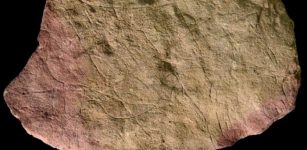 Our Early Ancestors Probably Created Intricate Artwork By Firelight
Archaeology | Apr 21, 2022
Our Early Ancestors Probably Created Intricate Artwork By Firelight
Archaeology | Apr 21, 2022 -
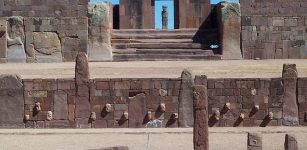 Superfood Of Ancient Andeans Reconstructed – What Helped To Fuel The Tiwanaku Civilization 2,500 Years?
Archaeology | Nov 30, 2021
Superfood Of Ancient Andeans Reconstructed – What Helped To Fuel The Tiwanaku Civilization 2,500 Years?
Archaeology | Nov 30, 2021 -
 Deception And Hidden Truth – Ancient Struggle Of The Eagle And Serpent – Part 1
Ancient Symbols | Sep 4, 2019
Deception And Hidden Truth – Ancient Struggle Of The Eagle And Serpent – Part 1
Ancient Symbols | Sep 4, 2019 -
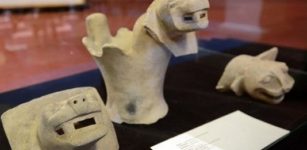 Lake Titicaca Reveals More Ancient Underwater Secrets
Archaeology | Oct 11, 2013
Lake Titicaca Reveals More Ancient Underwater Secrets
Archaeology | Oct 11, 2013 -
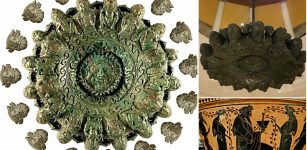 Etruscan Beautiful Bronze Lamp of Cortona – Studied
Artifacts | Apr 10, 2024
Etruscan Beautiful Bronze Lamp of Cortona – Studied
Artifacts | Apr 10, 2024 -
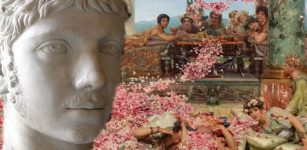 Museum Classifies Roman Emperor Elagabalus As Trans – But Modern Labels Oversimplify Ancient Gender Identities
Featured Stories | Nov 28, 2023
Museum Classifies Roman Emperor Elagabalus As Trans – But Modern Labels Oversimplify Ancient Gender Identities
Featured Stories | Nov 28, 2023 -
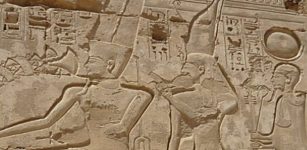 Khonsu: Enigmatic Egyptian Moon God, Healer, Protector And His Dark Side
Egyptian Mythology | Mar 12, 2019
Khonsu: Enigmatic Egyptian Moon God, Healer, Protector And His Dark Side
Egyptian Mythology | Mar 12, 2019 -
 Effects Of The Volcanic Eruption In Alaska Rippled Through Ancient Egypt During Cleopatra’s Reign
Archaeology | Jul 26, 2022
Effects Of The Volcanic Eruption In Alaska Rippled Through Ancient Egypt During Cleopatra’s Reign
Archaeology | Jul 26, 2022 -
 Eating And Social Habits Of People In The Balearic Islands 3,000 Years Ago – Reconstructed
Archaeology | Jan 18, 2023
Eating And Social Habits Of People In The Balearic Islands 3,000 Years Ago – Reconstructed
Archaeology | Jan 18, 2023 -
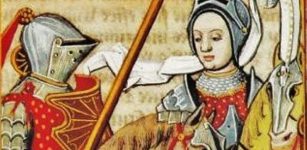 Jeanne de Clisson ‘Lioness Of Bretagne’: Her Black Painted Ships With Red Sails Terrorized English Channel
Featured Stories | Oct 4, 2019
Jeanne de Clisson ‘Lioness Of Bretagne’: Her Black Painted Ships With Red Sails Terrorized English Channel
Featured Stories | Oct 4, 2019 -
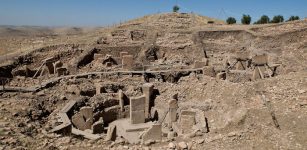 This Is The Mysterious Hilltop Where Civilization Began Scientists Say
Archaeology | Jun 24, 2022
This Is The Mysterious Hilltop Where Civilization Began Scientists Say
Archaeology | Jun 24, 2022 -
 Amazing Discovery: Great Pyramid Of Giza And Its Chambers Concentrate Electromagnetic Energy
Archaeology | Jul 31, 2018
Amazing Discovery: Great Pyramid Of Giza And Its Chambers Concentrate Electromagnetic Energy
Archaeology | Jul 31, 2018 -
 Whose Ancient Burials Are Hidden Inside The Vatican City’s Walls?
Archaeology | Mar 11, 2021
Whose Ancient Burials Are Hidden Inside The Vatican City’s Walls?
Archaeology | Mar 11, 2021 -
 Mystery Of Doppelgangers And Spirit Doubles – From Ancient To Modern Times
Featured Stories | Sep 16, 2014
Mystery Of Doppelgangers And Spirit Doubles – From Ancient To Modern Times
Featured Stories | Sep 16, 2014 -
 Nalanda – One Of The Most Praised Learning Centers And Masterpiece Of Ancient World
Featured Stories | Aug 24, 2015
Nalanda – One Of The Most Praised Learning Centers And Masterpiece Of Ancient World
Featured Stories | Aug 24, 2015 -
 On this day in history: Li Shimin becomes Emperor Taizong of Tang, China – Sep 4, 626
News | Sep 4, 2015
On this day in history: Li Shimin becomes Emperor Taizong of Tang, China – Sep 4, 626
News | Sep 4, 2015 -
 Bizarre Devil’s Tramping Ground In North Carolina Is Avoided By People And Animals
Featured Stories | May 1, 2019
Bizarre Devil’s Tramping Ground In North Carolina Is Avoided By People And Animals
Featured Stories | May 1, 2019 -
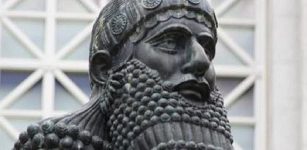 Hammurabi: Great King Of Babylon And His Code Of Justice
Historical Figures | May 14, 2017
Hammurabi: Great King Of Babylon And His Code Of Justice
Historical Figures | May 14, 2017 -
 Wanyūdō The Soultaker – Fearsome Yōkai In Japanese Mythology
Featured Stories | Nov 22, 2017
Wanyūdō The Soultaker – Fearsome Yōkai In Japanese Mythology
Featured Stories | Nov 22, 2017 -
 Troublemaker Eris: Greek Deity That Ignited Hatred Among All
Featured Stories | Apr 11, 2024
Troublemaker Eris: Greek Deity That Ignited Hatred Among All
Featured Stories | Apr 11, 2024



